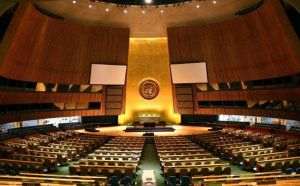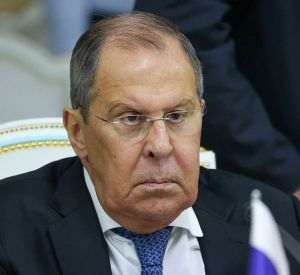The last month of summer was marked by a series of government decisions that continued to deepen the budget deficit, which - according to the budget execution for the first seven months published by the Ministry of Finance at the end of August - reached 4.02% of the Gross Domestic Product , given that, according to the state budget law for the year 2024, it should be, on December 31, at the level of 5%. In these conditions, Prime Minister Marcel Ciolacu, accompanied by the Minister of Finance, Marcel Boloş, as well as other members of the Cabinet, traveled to Brussels, where, on August 22, he discussed with Ursula von der Leyen - the president of the European Commission - about the need the revision of the assumed budget deficit target for the current year and the establishment of a seven-year plan in which Romania's finances will return to the maximum deficit level of 3% of GDP, as stipulated in the EU treaties.
During the meeting he had with Ursula von der Leyen, Marcel Ciolacu explained why he wants to expand the budget deficit margin for the coming years and why he wants a seven-year plan to re-enter the 3% deficit target. According to the statements made by the Head of Government after the meeting with the President of the Community Executive, the increase in budget expenditures is necessary because in 2025 and 2026 more investments will be made in the transport infrastructure, in the sanitary infrastructure, in the educational infrastructure, but also in energy.
In addition to the arguments brought by Prime Minister Ciolacu, we emphasize the fact that we are in an election year, when budget expenditures increase following the social measures taken by politicians.
The decision regarding the budget deficit should be taken this autumn, after the expert teams of the European Commission and those of the Ministry of Finance will reach a common point regarding the plan of strict measures that would be implemented.
Read August in numbers
We note that our country has been in the excessive deficit procedure since March 2020, because at the end of 2019, the level of the budget deficit was 4.6% of GDP.
Despite the level reached by the budget deficit in the first seven months of the current year, the Board of Directors of the National Bank of Romania operated, in the meeting of August 7, the second reduction of this year - after the one in July - of the policy interest rate monetary. Thus, the monetary policy interest rate dropped to 6.5%, from 6.75% in July, the interest rate for the credit facility (Lombard) was reduced to 7.5%, from 7 .75%, and the interest rate related to the deposit facility reached 5.5%, from 5.75%.
Corroborated with the BNR forecast of a reduction, at the end of the year, of the inflation rate to 4%, from the initial forecast of 4.9%, the decision of the Board of Directors was well received by the financial-banking field, but also by the international rating agencies. Thus, on August 30, 2024, the Fitch rating agency reconfirmed Romania's government debt rating at BBB-/F3 for long- and short-term foreign currency debt, as well as the stable outlook.
Politically, the Government has officially set the dates for the two rounds of presidential elections on November 24 and December 8 and for the parliamentary elections on December 1. After setting the election date, the PSD Congress took place on August 24, during which Marcel Ciolacu was re-elected head of the Social Democrats (being the only candidate for that position) and was designated as the party's candidate in the presidential elections. The PSD congress was marked by the forced removal from the foreground of social-democratic politics of European deputy Gabriela Firea, whom Marcel Ciolacu did not want in the new management team, her place as first vice-president being taken over by Daniel Băluţă, the mayor Sector 4 of the Capital. Among the surprises at the Congress, we also note the co-optation as vice-president of the PSD for the business environment of the former president of CNIPMMR, Florin Jianu, who held the position of minister for the Business Environment, Commerce and Entrepreneurship in the Grindeanu government.
• Increased budget expenditures, corrections through allocations directly from the Reserve Fund
Although the country's economy continues to face significant challenges, determined by both internal developments and external factors, and the budget deficit seems out of control, the Ciolacu government continued in August the policy of increasing budget expenditures by approving new public investments - municipal stadiums, swimming pools in different localities in the country, bypass belts, the construction of new express roads - and by increasing the budget by direct rectification - by government decision, from the Reserve Fund - of the amounts allocated to the Ministry of Development, the Ministry of Health , the Ministry of Education, the Ministry of National Defense, the Ministry of Culture, the Ministry of Transport, the Ministry of Investments and European Projects and... the Ministry of Finance.
For example, the budget of the Ministry of Transport and Infrastructure was supplemented with 820 million lei, money intended for the payment of subsidies for rail passenger transport and for the payment of bills for the beneficiaries of travel facilities, while the Ministry of Investments and European Projects received 575 million lei to honor the payment and reimbursement requests submitted by the beneficiaries of the Regional Operational Program and the Sustainable Development Program.
The budget of the Ministry of Finance also benefited from the budget supplement - for General Actions and for its own activity. Thus, the Finances led by Marcel Boloş received in August a budget increase of 286.30 million lei from the Budgetary Reserve Fund at the Government's disposal, an amount of which 150 million lei is allocated for insurance the lack of continuity in the implementation of the state aid scheme to support investments that promote regional development and the state aid scheme with the objective of stimulating investments with a major impact on the economy, as well as for the payment of state aid for other state aid schemes, among which also includes the IMM INVEST PLUS program and its components. From the budget supplement received in August by the Ministry of Finance, 23.15 million lei are allocated to ensure operating expenses, 15.3 million lei for the purchase of an X-ray scanning system for the Siret customs point, 51.3 million lei for the purchase for other customs scanners but also for the operationalization of the RO e-Seal system, 20.54 million lei for the completion of some projects, and 22 million lei for ensuring the financing of enforcement expenses.
• Start-Up Nation Romania-2024 edition, operationalized in September
Another program approved last month, which will have an impact on the state budget in the first stage of financing, is Start Up Nation - Romania, the 2024 edition, which will have a budget of over 446 million euros, which will be allocated from non-reimbursable external funds. According to the government decision, the program has two components:
- Pillar I - Activating the entrepreneurial potential of young people, which aims to ensure access to training courses in order to acquire entrepreneurial skills for 25,000 people, at least 10% of which are people belonging to the Roma minority;
- Pillar II - Support for the development of entrepreneurship among people in the target group, which aims to transfer entrepreneurial skills to a number of 4,600 people who live in less developed regions.
A budget of 295.7 million euros is allocated for Pillar I, of which 238 million represents the EU contribution and over 57.7 million euros from the state budget, and for Pillar II, over 150 million euros, of which over 127 8 million lei - EU contribution, and over 22.5 million euros - funding from the state budget.
From the total value of the Program budget, a minimum of 85% represents the value of the financial aid granted to de minimis aid beneficiaries and a maximum of 15% - the financial value managed by the administrator of the aid scheme, for the purpose of implementing the Program.
The program runs for a maximum period of 5 years, within the limits of the budget available for this measure.
According to Ştefan Radu Oprea, Minister of Economy, Entrepreneurship and Tourism, the program would become operational by the end of September.
• Public finances, in the red
All the Government's decisions to increase budget expenditures were taken under the conditions that the execution of the general consolidated budget in the first seven months of 2024 - published by the Ministry of Finance at the end of August - ended with a deficit of 71.04 billion lei, representing 4.02% of GDP, compared to 38.6 billion lei in the same period of the previous year. The increase in the deficit is mainly the result of the increase in budget expenditures, which increased by 23.2% in nominal terms compared to the same period of the previous year.
Total revenues amounted to 331.56 billion lei, registering an increase of 15.1%, supported by receipts from insurance contributions, VAT, payroll and profit tax, as well as non-tax revenues. On the other hand, the expenses of the general consolidated budget were 402.6 billion lei, with a significant increase in personnel expenses, which totaled 92.4 billion lei, and expenses for goods and services, which reached 53, 3 billion lei.
Investment expenses were also on the rise, totaling 56.99 billion lei, an increase of 46.4% compared to the previous year.
On August 14, the Government approved the Government Public Debt Management Strategy for the period 2024-2026, which foresees the actions of the Ministry of Finance to ensure the financing of the budget deficit and the refinancing of the public debt, mainly in national currency, in parallel with accessing the financial markets external, depending on the opportunities offered on these markets, with the aim of expanding the average maturity for total debt and diversifying the investment base. At the same time, the Ministry of Finance will continue the policy of contracting loans from international financial institutions (IFIs) in order to ensure robust sources of financing and ensure the minimization of costs in the medium and long term.
The strategy is limited to debt contracted directly or guaranteed by the Government, through the Ministry of Finance, but does not include loans from the availability of the general current account of the State Treasury ("temporary financing"), cash management instruments and guarantees granted in the name and account of the State by Exim Banca Românească, which were taken over in the public debt structure starting from 2022, according to the decision of the Court of Accounts no. 3/11.01.2023.
We note that, according to the data of the Ministry of Finance published for May 2024 (since then no information has been provided for the summer months), the government public debt amounted to 52.6% of GDP at the end of the last month of spring. The financing plan (without taking into account cash management instruments and government securities issued and due during the year) approved for the year 2024 in the amount of approximately 181 billion lei was 66% covered by May 31, 2024 According to preliminary data from August, the Ciolacu government borrowed 168 billion lei this year, i.e. 93% of the estimated gross financing requirement for the current year, and economic experts claim that by the end of the year the amount of loans will increase by 50%.
• Fitch keeps us country rating
Despite the increase in government debt, the international rating agency Fitch decided on August 30, 2024 to maintain our country rating. Thus, Fitch reconfirmed Romania's government debt rating at BBB-/F3, with a stable outlook. This reconfirmation was supported by the membership status of the European Union, capital flows from European funds and the macroeconomic stability of the country, as well as the positive evolution of the GDP per capita and the indicators of governance and human development, which stand at higher levels than countries in the same rating category.
In the agency's opinion, the Romanian economy will register a growth of 2.5% in 2024. The Fitch agency estimates that the public debt in relation to GDP will register an increase, but within the limits of sovereigns with a similar rating, and with the current median level of "BBB" , which stands at 58.3%.
The main factors that could improve the country rating include the sustained reduction of the budget deficit and the improvement of the current account position by reducing external indebtedness.
• Positive decision from the NBR
Another good news on the financial front during the past month is the decision of August 7 of the Board of Directors of the National Bank of Romania, by which the monetary policy interest rate was reduced by another 0.25 percentage points, which thus reached 6, 5%, from 6.75% in July - when the BNR operated the first decrease, after a year and six months in which the rate was 7%. The NBR also decided to reduce the interest rate for the credit facility (Lombard) to 7.5% and the interest rate related to the deposit facility to 5.5%.
In making this decision, Council members pointed to the annual rate of inflation narrowing in the second quarter more than anticipated, falling to 4.94 percent in June from 6.61 percent in March, mainly as a result of the substantial cheapening of energy, especially natural gas, under the influence of the legislative changes applied starting from April 2024, as well as against the background of the continued decrease in the dynamics of food prices. In turn, the annual adjusted CORE2 inflation rate intensified its downward trend, including against forecasts, reducing to 5.7 percent in June from 7.1 percent in March 2024, as the slowdown the rate of disinflation in the processed food segment was accompanied by its acceleration in the non-food goods segment and that of services, whose annual dynamics remain high, the members of the Council emphasized. With regard to future macroeconomic developments, Council members indicated that the new assessments reveal an improvement in the inflation outlook compared to the previous forecast, especially in the near term, as the annual rate of inflation is expected to decline at the end of of the current year and in the first quarter of 2025 to significantly lower values than previously forecast, and after a temporary increase in the second quarter of 2025 to return and remain slightly below the upper limit of the target range. Thus, it would decrease to 4% in December 2024, to 3.4% in the last month of 2025 and to 3.2% at the end of the forecast horizon, compared to the values of 4.9%, 3.5% and respectively 3.4% indicated by the previous projection for the same reference points.
However, the NBR shows that there are some significant uncertainties associated with the future evolution of energy and food prices, in the context of legislative changes in the field and the prolonged drought this year, as well as the outlook for crude oil and other raw materials quotations, in the context of escalating geopolitical tensions. The members of the Council also highlighted the great uncertainties and risks arising from the conduct of fiscal and revenue policy in the current year, against the background of the result of the budget execution in the first half of the year, the dynamics of salaries in the public sector and the overall impact of the new pension law. However, high risks of the opposite direction are associated with the actions and measures that will probably be taken in the future in order to achieve the fiscal correction, in the context of the medium-term fiscal-structural plan assumed to be configured and submitted to the European Commission in the fall of this year, in accordance with the new EU's economic governance framework, Council members argued.
In this context, the members of the Council highlighted once again the importance of maintaining a high pace of attracting European funds and the requirement of their effective use, including those related to the Next Generation EU program, which are essential for achieving the necessary structural reforms and the energy transition, but and for counterbalancing, at least partially, the contractionary effects of geopolitical conflicts.

















































